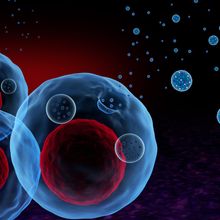ABOVE: © MESA SCHUMACHER
Synthetic biologists are applying new strategies in genetic engineering to encode traits and smart circuits in bacteria for more effective in vivo monitoring and drug delivery. At the same time, engineers are developing instruments for external control and guidance of bacteria with the aim of enhancing their ability to find and access tumors. Here are a few examples.
 © MESA SCHUMACHER | Bacterial bombsJeff Hasty of the University of California, San Diego, in collaboration with Sangeeta Bhatia of MIT (and T.D. in Bhatia’s lab), engineered an attenuated Salmonella enterica bacterial strain to synchronously release cancer therapeutics when the population reaches a critical density, allowing periodic drug delivery in mouse tumors. The effect is based on quorum lysis, meaning when a critical bacteria cell density is sensed by the population, they lyse and release the drug, while surviving bacteria keep proliferating until the critical threshold is... |
Simone Schuerle is an assistant professor at ETH Zurich and a member of the university’s Institute for Translational Medicine. Tal Danino is an assistant professor at Columbia University and a member of the Herbert Irving Comprehensive Cancer Center and the Data Science Institute.
Read the full story.
Interested in reading more?






